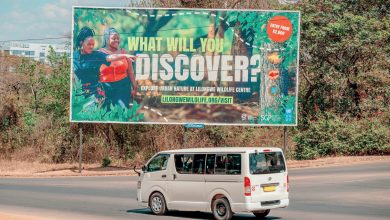Malawi tourism through integrated conservation of culture, nature
By Haswell Magwegwe, Mphatso Komiha, Mwayi Lusaka; Mzuzu University students and lecturer in the Department of History and Heritage Studies.
Malawi is known for its rich biodiversity and cultural heritage. The establishment of national parks, game parks and game reserves reflects the country’s commitment to conserving its natural resources and wildlife heritage. These protected areas serve as vital habitats for diverse flora and fauna as well as spaces where cultural and historical significance are preserved.

The history of conservation in Malawi dates back to the colonial era with the establishment of protected areas. The first formal conservation efforts were initiated in the 1930s, but significant progress was made after Malawi gained independence in 1964. The government, with support from international conservation organisations, established national parks, game parks, forest reserves and game reserves to protect wildlife and ecosystems. For example, Nyika National Park which was established in 1965 is Malawi’s oldest national park, Lake Malawi National Park which was declared world heritage site in 1986 is one of the most popular parks for marine life viewing.
As we celebrate International Tourism Day with an important theme of Tourism and Sustainable Transformation, we would like to reflect this transformation in the arena of conservation of heritage that focuses on integration rather than separation of the binaries between culture and nature. Indeed, elsewhere the debate and engagement with boundaries between nature and culture conservation have been extensively explored. However, this transformative conversation has not yet gained much traction here in Malawi at scholarly level and public engagement until recently. The research dissertations of two students of History and Heritage Studies at Mzuzu University this year have begun to chart this conversation of transformation and sustainable tourism that seeks to bridge the gap between culture and nature in conservation and appeals for their integration for sustainable tourism of the indigenous communities.
Haswell Magwegwe’s thesis “Fingira Rock Art and Integrated Conservation Management at Nyika National Park in Malawi (1965- 2024)” suggests the transformative agenda in sustainable tourism by proposing for a comprehensive and practical integration of cultural heritage sites such as Fingira Rock Art in Nyika National Park.
Situated within the park, Fingira comprises a series of rocky outcrops and sheltered niches that have served as sites for human occupation and ritual activity over millennia. Its elevated position and natural rock formations have made it an ideal location for early human inhabitants to create and preserve rock art, serving both functional and spiritual purposes.
Fingira rock art has a long history that tells much of the people around Nyika Plateau as well as those from the Stone Age period. It is the only rock art site in the Nyika area known to belong to what is known as the Central African Schematic Art Tradition, usually a series of circles and parallel lines. Although the paintings are very different from paintings found in Southern Africa, there are some commonalities in them which often depict hunting scenes and wildlife. They are very old and weathered and strictly not to be touched.
Local people believe that their ancestors were the artists and authors behind the paintings and that the rock carvings were also used for some rituals, for example, rainmaking and, therefore, significant to the identity of their community.
However, Haswell Magwewe has observed that despite the historical and cultural significance of Fingira Rock Art within Nyika National Park, the site has not been meaningfully integrated into the park’s conservation strategies largely due to limited community involvement in heritage management.
Since the park’s establishment in 1965, conservation efforts have predominantly focused on biodiversity, with minimal emphasis on the protection and promotion of cultural and historical assets such as Fingira Rock Art. Although existing policies acknowledge the importance of preserving cultural heritage, the park’s management has often overlooked the cultural dimensions of the landscape and the potential role of local communities in safeguarding these resources, a challenge that requires ongoing attention and adaptation.
Magwegwe, therefore, suggests that engaging local communities and fostering collaborative approaches are essential for enhancing the effectiveness of conservation efforts. He has argued that this lack of community engagement has not only contributed to the gradual deterioration and neglect of the Fingira Rock Art as well as other historical and cultural sites. But it has also led to missed opportunities in promoting sustainable tourism, enhancing cultural identity and achieving holistic conservation outcomes.
According to Magwegwe, addressing this gap requires a participatory approach that recognises and empowers local communities as key stakeholders in cultural heritage conservation.
Thus, Magwegwe’s research underlines a critical gap in community engagement where local voices, particularly those of the Phoka people, are insufficiently integrated into decision-making processes.
Historical displacement of communities during the park’s establishment has further alienated them from their heritage sites, weakening traditional custodianship and disrupting cultural continuity. Despite these challenges, there is a strong willingness from local communities to collaborate in protecting and promoting Fingira Rock Art and other cultural sites. The study concludes that achieving meaningful integration of cultural heritage in nature conservation requires a deliberate shift toward community inclusiveness and participatory management models. In addition, the Department of National Parks and Wildlife should strengthen policy frameworks, invest in educational outreach and secure funding for heritage conservation as essential steps.
Magwegwe argues that by embracing the intertwined nature of cultural and natural heritage, Nyika National Park can become a model of holistic conservation that not only preserves biodiversity, but also honours and sustains Malawi’s cultural legacy.
Mphatso Komiha’s thesis “Conservation and Tourism of Mwala Wa Mphini at Lake Malawi National Park World Heritage Site in Mangochi from 1986-2025” also highlights the significance of transformative approaches to tourism through integrated conservation of both cultural and natural heritage for sustainable tourism.
The name “Mwala Wa Mphini” is translated literally as “Rock marked with traditional scars”. What makes Mwala Wa Mphini unique is the long grooves or “cuts” along the surface of the rock which resemble the marks one might receive after visiting a traditional healer as an identity marker.
The origin of these marks is subject of debate, ranging from mythological explanation to geological formation. Mwala Wa Mphini holds deep cultural and spiritual significance for the local people whose tradition is passed down through generations. It reflects the heritage of the indigenous people known as the Wa Mphini. To them, Mwala Wa Mphini is more than just a rock, but also their history, culture and a connection to the land and their ancestors. For examples, elders performed rituals around the rock to seek blessings and protection during fishing escapades or guidance.
The rock was also a place of gathering where people told stories, shared wisdom and passed down cultural practices from one generation to another.
Apart from its historical importance of preserving indigenous beliefs and spiritual values, the site holds tourism potential, attracting both local and international visitors who are eager to learn about the rich cultural heritage of the area.
Mwala Wa Mphini has a rich history that can greatly enhance the understanding of ancient cultures, religious history and complement tourism activities at Lake Malawi National Park.
However, Komiha has observed that Mwala Wa Mphini does not receive adequate attention from the Lake Malawi National Park and is often overshadowed by natural attraction in the park. Additionally, oral histories at the site are at risk of being lost due to generation changes.
Furthermore, the site lacks collaboration, proper documentation and conservation measures or actual policies for its management. For instance, there is no clear policy or plan in place to protect the rock, making it challenging to manage both its conservation and tourism effectively. According to Komiha, this constitutes a problem that needs to be addressed concerning Mwala Wa Mphini.
He has argued that Mwala Wa Mphini has great potential for cultural tourism, especially if it is better promoted and preserved. Visitors are not only interested in wildlife, but also in understanding the people, beliefs and stories of the places they visit. With proper interpretation, clear signage and cultural storytelling, the rock can become a key heritage attraction. This would help create income for local communities and raise awareness about Malawi’s rich indigenous history.
However, this must be done with sensitivity to cultural values and the participation of the local custodians. Komiha observes that when local people are included and respected, conservation and tourism efforts become more effective and sustainable. Heritage conservation, as he contends, should not only be about nature or buildings, but also about people, their stories and their connection to the land.
These two studies hold significant value for multiple stakeholders, including conservationists, cultural heritage experts, policymakers, local communities and academic researchers. By examining the integration of cultural heritage, specifically Fingira Rock Art and Mwala Wa Mphini in nature conservation, the studies point to the deeper understanding of the connectedness between cultural and natural heritage. This is essential for achieving sustainable development goals as it emphasizes the interconnectedness of cultural preservation and ecological conservation.
To the conservation practitioners, the studies provide insights into how cultural heritage can enhance biodiversity conservation efforts. By incorporating the two cultural heritage sites into the parks’ management strategies, conservationists can foster greater community engagement, promote eco-cultural tourism and strengthen the resilience of protected areas.
This approach not only safeguards biodiversity, but also ensures the preservation of cultural landmarks that hold historical and spiritual significance for local communities. For policymakers, the research highlights the need for integrated policies that recognise and protect cultural heritage within natural conservation frameworks.
For local communities, these studies underscore the importance of their cultural identity and traditional knowledge in conservation efforts. By involving communities in the preservation of these cultural heritage sites, there is promotion of a sense of ownership and responsibility and the local communities feel empowered to actively participate in safeguarding the parks. This can lead to improved livelihoods through sustainable tourism and the revitalisation of cultural practices.
Integrated conservation in Malawi should, therefore, be embraced as pathway to transformative sustainable tourism.





